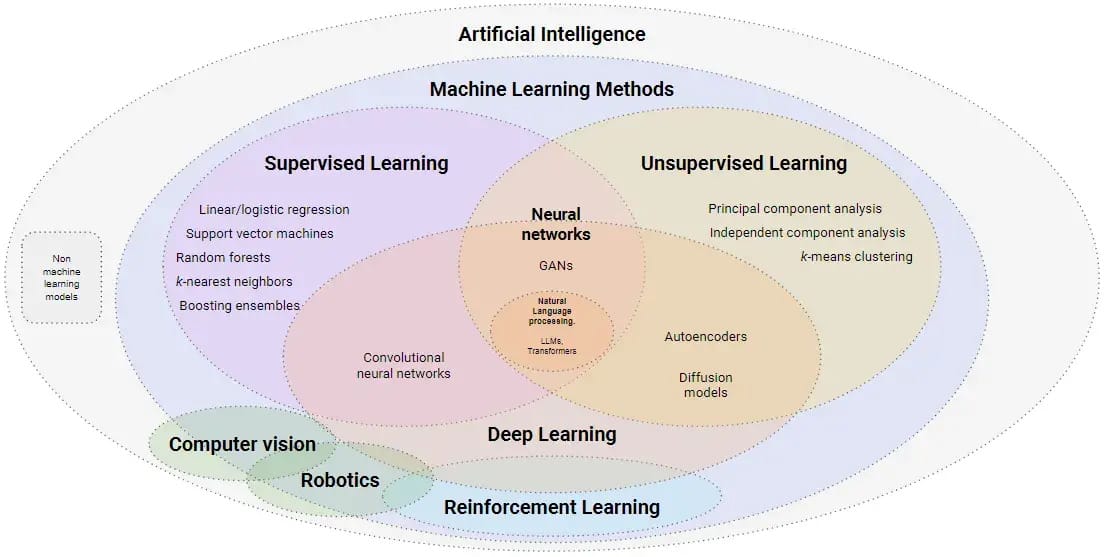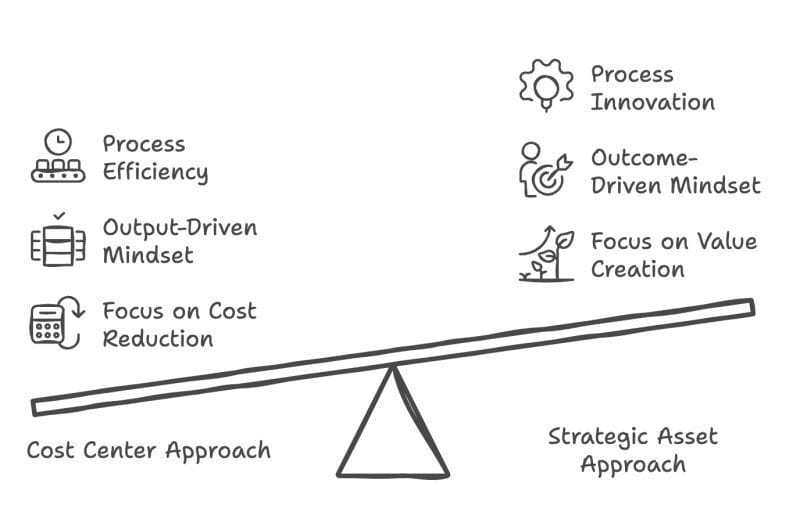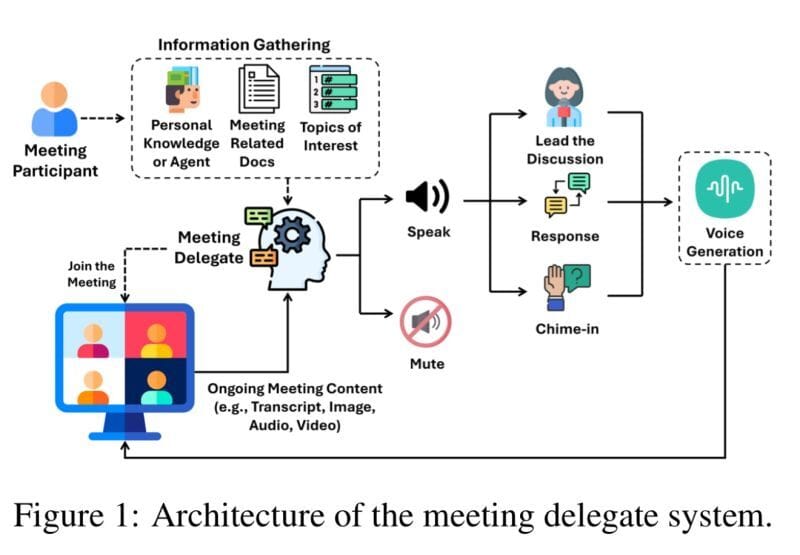Welcome to 8 bits for a Byte: AI isn’t just a tool—it’s a competitive battlefield. This week, we’re tackling the biggest AI leadership questions: How do you choose the right AI model for your business? What does AI product management really look like? And are you making AI a business driver—or just an efficiency hack? We’re also diving into AI’s latest workplace takeover—meeting delegates. Ready to build an AI strategy that actually gives you an edge? Let’s go!
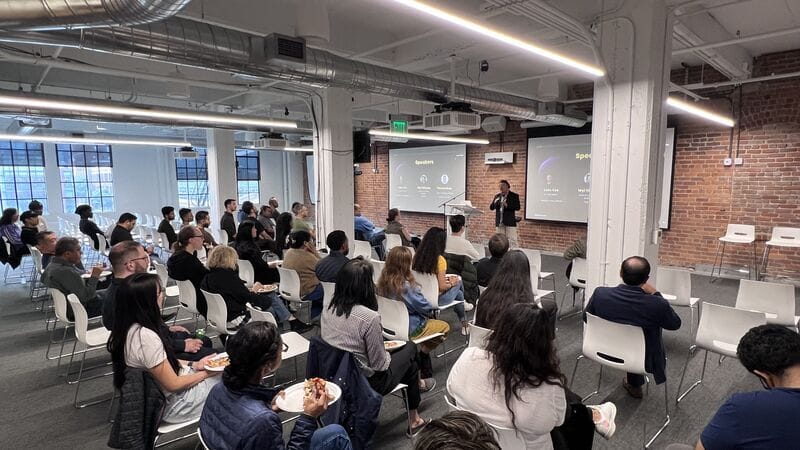
Welcome, To 8 bits for a Byte
Here's what caught my eye in the world of AI this week:
Data, AI, and Trust: What Every Leader Needs to Know About Open Source vs. Proprietary Models
If you’re integrating AI into your business, here are five critical factors to consider when choosing between open-source and proprietary AI models.
1. Data Security: Who Controls Your Data?
.
🔹 Open Source: You have control over where and how the model is hosted—whether on-premises, in the cloud, or through an inference service provider. You manage data retention and security policies.
.
🔹 Proprietary Models: Your data is sent to an external provider, and their data retention policies vary. Many do not default to zero data retention—you must request it, and approval isn’t guaranteed.
.
🔹 Key Takeaway: If data security is a priority (especially in regulated industries like healthcare and finance), open-source models provide greater control over data handling.
2. Update Control: Who Decides When Your Model Changes?
.
🔹 Open Source: You decide if and when to update your model. No forced upgrades.
🔹 Proprietary Models: The vendor updates the model on their schedule. While most give notice, at some point, you will be required to adapt.
.
🔹 Key Takeaway: If stability and version control are essential for your business, open-source models offer more predictable updates.
3. Customization: Can You Tailor the Model to Your Needs?
🔹 Open Source: You can modify the model, access weights, and in some cases, see the training data.
.
🔹 Proprietary Models: Customization is limited to fine-tuning within the constraints of the vendor’s platform.
.
🔹 Key Takeaway: If you need a highly specialized AI model, open-source solutions provide deeper customization.
4. Transparency: Do You Know How the Model Works?
.
🔹 Open Source: Many models disclose training methodologies and data sources.
🔹 Proprietary Models: The training process is a black box—you don’t know exactly what data was used.
.
🔹 Key Takeaway: If AI explainability is a concern (for regulatory compliance or ethical AI initiatives), open-source models offer more visibility.
5. Quality: Does Open Source Mean Better or Worse Performance?
🔹 Proprietary models, like GPT-4, often have cutting-edge performance because they’re trained on massive datasets with advanced infrastructure.
.
🔹 Open-source models are improving rapidly, with some now rivaling proprietary models in specific domains.
.
🔹 Key Takeaway: If you need state-of-the-art general performance, proprietary models might still have an edge—but open-source models are closing the gap fast.
The Bottom Line: Choose What Aligns with Your AI Strategy
When adopting AI, it’s not about which model is best—it’s about which model best aligns with your business needs.
✅ If you prioritize control, security, and customization, open-source models give you more flexibility.
.
✅ If you value ease of use, pre-trained intelligence, and enterprise support, proprietary models might be a better fit.

Quote of the week

This quote really made me pause and reflect. It reminded me of the corporate practice of repeating key takeaways at least five times—so they either sink in or your team starts saying, “No más!”
.
But there’s a fine line between ensuring clarity and over-explaining to the point of exhaustion. I’ve seen both sides—my dad was a classic over-explainer, and I’ll admit, I can fall into that trap too. Finding the balance between reinforcing a message and overwhelming people is something I’m always working on.

This is a great breakdown of AI fundamentals for Product Managers! To make it even more digestible, below an AI Quick Bytes version with key takeaways.
There is Paywall for the above article but there is a seven day free trial and you can read most of it for free. If you are a Product Manager / Program Manager or interested in becoming the Product Compass by Pawel Huryn is a must subscribe.
AI for Product Managers: A Crash Course
🚀 AI is transforming product management, and every PM should understand the basics. Let's break it down:
1. The AI Landscape & Key Terms
Generative AI creates new content, not just analyzes data.
Types of Machine Learning:
Supervised: Learns from labeled data (e.g., fine-tuning models).
Unsupervised: Finds patterns in unlabeled data.
Reinforcement: Learns via rewards (e.g., AlphaGo).
Deep Learning: Uses multi-layered neural networks.
LLMs (Large Language Models): Pre-trained AI models for text tasks.
🛠 Action: Identify AI-powered tools relevant to your product and experiment with them.
2. How Neural Networks Work
Inspired by the human brain, neural networks process data in layers.
Training involves weights, activation functions, and backpropagation to optimize accuracy.
Great for classification but struggles with sequential data (e.g., language).
🛠 Action: Try the TensorFlow Playground to visualize neural networks in action.
3. How Transformers and LLMs Work
Transformers introduced self-attention, allowing models to weigh the importance of different words in a sentence.
Key Steps in Text Processing:
Tokenization: Break text into smaller pieces.
Positional Encoding: Helps track word order.
Encoding & Decoding: Processes input and generates responses.
LLMs use vast datasets + deep learning to generate human-like text.
🛠 Action: Test GPT-powered applications (e.g., ChatGPT, Claude, Gemini) to understand their strengths and weaknesses.
4. Transformers vs. The Human Brain
🤖 AI Models: Fixed after training, rely on vast data, struggle with generalization.
🧠 Human Brain: Constantly adapts, learns from few examples, retains memory over time.
⚡ AI is not replacing human thinking—it’s a tool to enhance it.
🛠 Action: Learn to leverage AI as a co-pilot rather than fearing it as a competitor.

🚀 AI is now a commodity. What’s next?
With OpenAI’s GPT, Microsoft’s Big AI, and Google’s Gemini widely available, AI is no longer a competitive differentiator by itself. Business leaders must think beyond efficiency and cost savings to stay ahead.
1. AI Alone Won’t Set You Apart
Just like IT before it, AI is following the path of commoditization—ubiquitous but less strategically valuable.
Companies that succeed will integrate AI into their core operations and customer offerings rather than just using off-the-shelf models.
Competitive advantage lies in proprietary knowledge, not the AI model itself.
🛠 Action: Identify unique data, processes, and expertise that can fuel your AI models.
2. AI as a Catalyst for Business Transformation
AI isn’t just an efficiency tool—it can reshape markets and enable new business models.
Startups leveraging AI strategically (e.g., Runway in art & entertainment) are gaining rapid market traction.
AI-driven insights can empower businesses to adapt faster and make better decisions.
🛠 Action: Rethink your business model, market approach, and product offerings with AI at the core.
3. The Danger of Generic AI Solutions
Off-the-shelf AI tools can lead to one-size-fits-all solutions that fail to differentiate.
AI works best when paired with deep domain expertise and a tailored strategy.
The future isn’t AI—it’s how businesses use AI uniquely.
🛠 Action: Develop custom AI applications aligned with your company’s strengths and market positioning.
4. People + AI = The Ultimate Advantage
AI is only as good as the people who manage it.
The best companies engage employees in AI adoption, experimentation, and innovation.
Leadership matters: Strong AI strategies come from the top down.
🛠 Action: Invest in AI training, leadership alignment, and cross-functional AI teams.
The Big Question: How Will You Use AI?
Ask yourself:
✅ How can AI enhance your core business operations?
✅ How can AI be baked into your products and services?
✅ What unique data, knowledge, and expertise give you an edge?
The AI revolution isn’t about having AI—it’s about how you use it to create value. 🚀

Your daily AI dose
5 Reasons to join Mindstream
We’re the only AI newsletter you need
We’re so good HubSpot bought us (like they bought The Hustle)
150,000+ strong community staying ahead of the curve
We’re actually fun to read
Written by an awesome team of real people, not AI tools
P.S - you get a load of free stuff when you subscribe

A picture is worth a thousand words—this graphic by Melissa Perri, perfectly illustrates the divide between AI winners and those stuck in outdated thinking.
Companies that treat AI as just another cost-cutting tool—focusing solely on efficiency and outputs—risk falling behind. The real AI advantage lies in innovation, value creation, and an outcome-driven mindset.
Winning the AI race isn’t just about adopting technology; it requires a full-scale transformation—culturally, organizationally, and operationally. That’s why so many companies struggle with AI—it’s not a plug-and-play solution; it’s a strategic shift.


My favorite of all time!
Sunday Funnies 🤣 .
Should I continue the Sunday Funnies section?

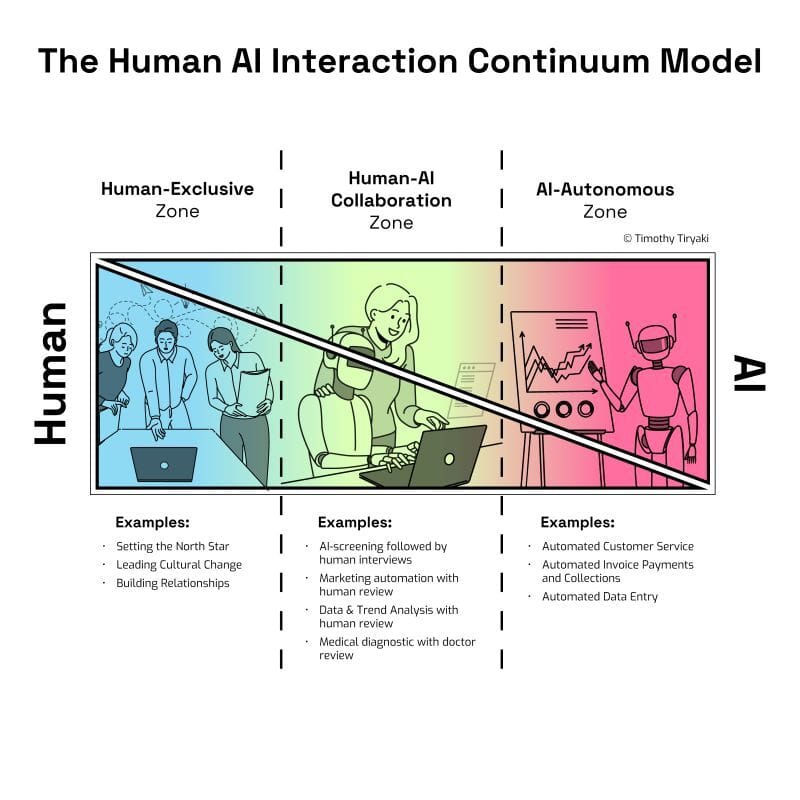
Simplified example of the AI Interaction Continuum Model


MEETING DELEGATE: Benchmarking LLMs on Attending Meetings on Our Behalf
Meeting Delegat
T rise of LLM-powered meeting delegates presents an extraordinary opportunity to revolutionize workplace efficiency, allowing AI to attend meetings on our behalf. The research highlights how models like GPT-4o and Gemini 1.5 Pro can engage dynamically in conversations, summarizing discussions and responding in real-time. This could dramatically reduce meeting fatigue, free up cognitive bandwidth, and create a new paradigm for AI-driven collaboration. Yet, the technology is still nascent—current models capture only about 60% of key points accurately, and real-time engagement remains a challenge.
The intrigue lies in AI’s potential to seamlessly integrate into human conversations, balancing active participation with appropriate silence. The benchmarking study reveals how different LLMs adopt varying engagement strategies—some more cautious, others overly assertive. This raises compelling questions: Could AI one day negotiate on our behalf? Could it understand corporate nuances better than employees themselves? The study even hints at the possibility of digital "clones" representing professionals in meetings, a vision that feels both futuristic and eerily plausible.
But with great power comes great peril. The scariest prospect is AI's susceptibility to errors—misinterpreting context, hallucinating facts, or failing to respect confidentiality. Transcription mistakes, privacy concerns, and over-reliance on imperfect AI could lead to misinformation, security risks, or even AI-generated "ghosts" in boardroom decisions. The research wisely advocates for a phased deployment approach, ensuring human oversight remains central. As we edge toward a world where AI manages our workplace interactions, we must balance efficiency with ethical responsibility, ensuring these digital delegates truly serve us, rather than replace us.

Until next time, take it one bit at a time!
Rob
Thank you for scrolling all the way to the end! As a bonus check out the below which does a good job at putting together a Gen AI Learning roadmap.
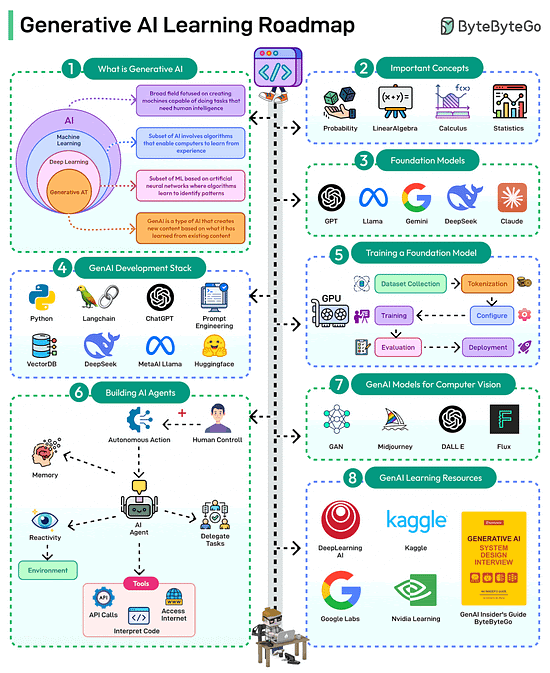
P.S.
Here are some FREE newsletters our readers also enjoy. Explore, it helps us keep our newsletter FREE is much appreciated and it will help feed your head !

